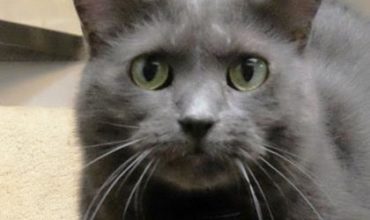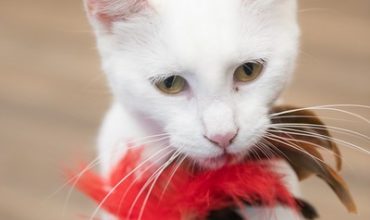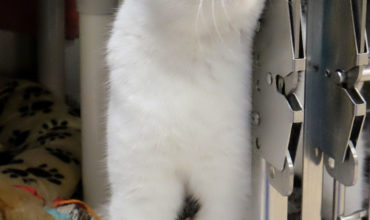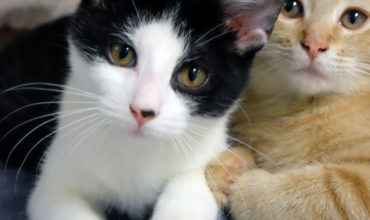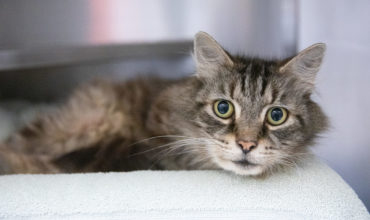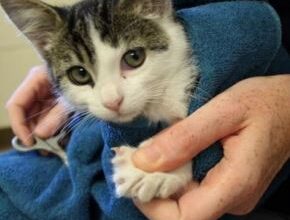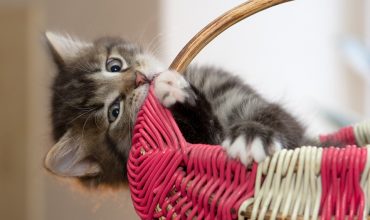Cat guru Jackson Galaxy recently spoke about some ways to live the best life with your beloved cat, and his tips are a great place to start when thinking of how to have a really great relationship with your cat.
Read More
Archives for cats
Training your… cat?
More and more, cat owners are understanding that there’s more to living with a cat than just caring for their physical needs. The word is out that cats love training and that their emotional needs are just as important.
Read More
Why do cats purr?
It’s a long contested question, one that we’re getting closer to being able to answer, but it does remain one of the mysteries of the cat world to some degree. Newest research supposes that the purr comes from the muscles within the cat’s larynx. As the muscles move, they constrict the glottis and as the cat breathes in and out, the air vibrates and we hear purring.
Read More
Cat got the zoomies? Should you be concerned?
Most people are familiar with the concept of dog “zoomies,” but it’s not as widely known that cats can, and do, absolutely have the zoomies, too. Those moments when your cat is spontaneously tearing around the house and you can’t get him to stop, even for his favorite treat? He’s likely in zoomie mode. Why does this happen? It could be that he just woke up from an epic cat nap! Cats can sleep up to 16 hours a day to conserve energy for hunting. When they wake up, the zoomies can happen because they’re reinvigorating their minds and
Read More
4 things everyone should consider before adopting a second (or third…) cat
Thinking of adding a cat or kitten to your feline crew at home? Here are some things to consider: Energy Level! – Adopting a kitten or cat with a similar energy level to the resident cat(s) is generally the best fit. Have a cat who lived with cats previously but it’s been a long time? Pick a cat with a positive known history with other cats. Cats don’t automatically like other cats just because they liked another cat at one time; the introductions still need to be slow and managed. Adopting a kitten for an older cat who’s lost a companion or to liven
Read More
When Problems Arise With Your New Cat
It’s not uncommon to see some quirky or concerning behavior not long after bringing your newly adopted cat or kitten home.
Read More
Tips for Resolving Litterbox Problems
Why Do Some Cats Eliminate Outside the Litter Box? Litter box use problems in cats can be diverse and complex. Behavioral treatments are often effective, but the treatments must be tailored to the cat’s specific problem. Be certain to read the entire article to help you identify your particular cat’s problem and to familiarize yourself with the different resolution approaches to ensure success with your cat. Litter box Management Problems If your cat isn’t comfortable with her litter box or can’t easily access it, she probably won’t use it. The following common litter-box problems might cause her to eliminate
Read More
Trimming Cat Claws
[print-me] The act of trimming your cat’s nails can seem like a daunting task, but there is good news: A team of people working with a cat can get a nail trim done in 20 seconds flat. A little trickier is doing this alone, but rest assured, it can be done! Unfortunately, there is also bad news: Many cats are not tolerant of nail trims, and many people are not skilled in the process. Below are some pointers that will hopefully help cat owners keep their cats’ nails trimmed. 1. Know those nails! Most cats have 18 nails (five on
Read More
Unusual eating habits in dogs and cats
[print-me] Dogs and cats will sometimes eat socks, rocks or other objects, which may result in a variety of problems for both you and your pet. Not only can your possessions be destroyed or damaged, but objects such as clothing and rocks can produce life-threatening blockages in your pet’s intestines. Eating non food items is called pica. A specific type of pic is stool eating (either their own or that of another animal) and, while not necessarily dangerous to the animal, is probably unacceptable to you. Stool eating is called coprophagy. The causes of pica and coprophagy are not known. Many ideas have been proposed by various experts, but none have been proven or disproven. Such behaviors may sometimes be attention-getting behaviors. If engaging in one of these behaviors results in some type of social interaction between the animal and his owner (even a verbal scolding) then the behavior may be reinforced and occur more frequently. These behaviors may be attempts to obtain a necessary nutrient lacking in the diet, although no nutritional studies have ever substantiated this idea. They may also stem from frustration or anxiety. It’s possible behaviors begin as play, as the animal investigates and chews on the objects, then subsequently begins to eat or ingest them. It has been suggested that coprophagy is carried over from the normal parental behavior of ingesting the waste of young offspring. Some experts believe coprophagy occurs more often in animals who live in relatively barren environments, are frequently confined to
Read More
Managing scratching
[print-me] By nature, cats have a need to scratch objects in their environment. We know that cats leave their scent behind when they scratch things and that this is a means of letting the world know that they’re there… whether it is to warn another cat away or to invite them to play. They tend to go back to the same spots and scratch those spots repeatedly for this reason; it’s another way for them to mark their territory. Even cats who have been declawed will try to scratch things for this very reason! Scratching also happens in play, as
Read More




